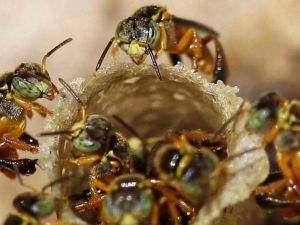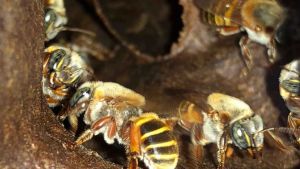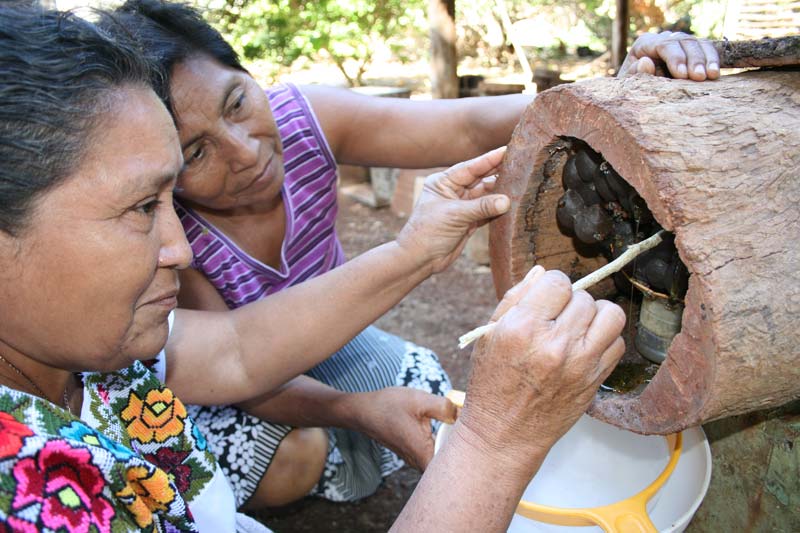In the Sanctuary of Melipona Bee in Coba we teach visitors what the Melipona bees and their honey are like. The best known honey and most valued in the world. Consequently the melipona bee is usually cared and protected by Mayan women who continue the cultural legacy of their peoples. They take care of the stingless bee. The docile bee that, being at a disadvantage against other aggressive bees and wasps. For this reason they need the help of people to survive and thrive. This makes Mexico the main exporter of Melipona honey.
The Melipona Bee is Stingless

There are many species of native bees in Mexico and Mesoamerica. This is a particular group, is the stingless bees. This group of bees make up what is known in biology to this genus as Meliponini. Many species belong to this genus. Approximately 10 species have been cultivated since pre-Hispanic times, constituting a biological and cultural heritage.
The melipona honey

As a result the melipona honey is known for its handling by the Mayans of the Yucatan Peninsula, but it is also cultivated in other places in Mexico such as Chiapas, Veracruz, Oaxaca and some places in Central America such as Guatemala.
This bee is one of the most emblematic species of stingless bees, as it was managed by the Mayans since pre-Hispanic times, they called it Xunan kab. It is a warm climate bee founded mainly in the Yucatan peninsula.

The Melipona is a small size bee. A little more than one centimeter long and lives in colonies of 1,000 to 3,000 individuals. They have shelter in jobones or hollow trunks present in trees. Each colony contains a single queen, the mother of all bees. The logs for breeding bees are placed horizontally. Then the brood cells are single use. So they are destroyed to recover the wax of the bees at the end of their reproduction.
The history of Melipona Bee
The most impressive document that recounts the management of this species is the Madrid Codex. The Spanish discovered the Madrid Codex and learned that it was elaborated more than 8 centuries ago by Mayan scribes.
With a lot of drawing detail, this document shows bees and their handling in jobones. Historians tell us about this codex explaining the management of bees in turn. In effect the mayan people used the honey to exchanged for another type of food. Under those circumstances the honey also used to prepare drinks such as the balché. Indeed the balche is a traditional sweet beverage used and consumed during the ceremonies and that was used as an offering for the ruling class.
Protectors of the bees
Indigenous Mayan Woman Leydy Pech won Nobel Goldman Environmental Prize. Therefore the Guardian of the Mayan Bees. Leading a movement that managed to stop Monsanto’s genetically modified soy production in southern Mexico. Leydy Pech has dedicated many years of her life to the care and preservation of the melipona bee in Hopelchén, in the Yucatán peninsula, which made her worthy, along with five other people, to the mention of heroes of the environment.


